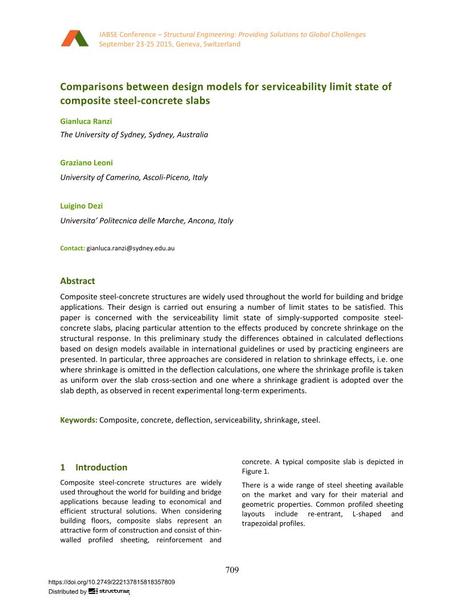Comparisons between design models for serviceability limit state of composite steel-concrete slabs

|
|
|||||||||||
Détails bibliographiques
| Auteur(s): |
Gianluca Ranzi
(The University of Sydney, Sydney, Australia)
Graziano Leoni Luigino Dezi |
||||
|---|---|---|---|---|---|
| Médium: | papier de conférence | ||||
| Langue(s): | anglais | ||||
| Conférence: | IABSE Conference: Structural Engineering: Providing Solutions to Global Challenges, Geneva, Switzerland, September 2015 | ||||
| Publié dans: | IABSE Conference Geneva 2015 | ||||
|
|||||
| Page(s): | 709-716 | ||||
| Nombre total de pages (du PDF): | 8 | ||||
| Année: | 2015 | ||||
| DOI: | 10.2749/222137815818357809 | ||||
| Abstrait: |
Composite steel-concrete structures are widely used throughout the world for building and bridge applications. Their design is carried out ensuring a number of limit states to be satisfied. This paper is concerned with the serviceability limit state of simply-supported composite steel- concrete slabs, placing particular attention to the effects produced by concrete shrinkage on the structural response. In this preliminary study the differences obtained in calculated deflections based on design models available in international guidelines or used by practicing engineers are presented. In particular, three approaches are considered in relation to shrinkage effects, i.e. one where shrinkage is omitted in the deflection calculations, one where the shrinkage profile is taken as uniform over the slab cross-section and one where a shrinkage gradient is adopted over the slab depth, as observed in recent experimental long-term experiments. |
||||
| Mots-clé: |
acier béton
|
||||
